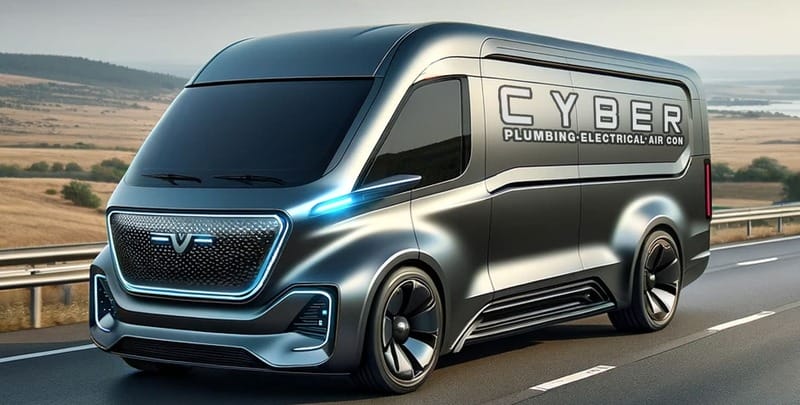
The Pros and Cons of Switching to Energy Efficient Lighting
In today's world, where environmental sustainability and energy efficiency are becoming increasingly important, individuals can make a significant impact by switching to energy efficient lighting.
Lighting is essential to our lives, and transitioning to energy-efficient options can have several benefits. Discover the pros and cons of switching to energy efficient lighting, examining options such as compact fluorescent lamps (CFLs), incandescent light bulbs, light-emitting diodes (LEDs), and more. So let’s shed some light on the subject and discover the right bulbs for you!
Pros of Energy Efficient Lighting
Energy Savings
The primary advantage of energy efficient lighting is its ability to reduce energy consumption. Energy-efficient light bulbs, such as CFLs and LEDs, use less electricity than traditional incandescent bulbs. By making this switch, you can save considerable energy, lowering energy bills and reducing environmental impact.
Cost Savings
Although energy-efficient bulbs may have a higher upfront cost than traditional incandescent bulbs, they more than makeup for it in the long run. The energy savings achieved with CFLs and LEDs can result in significant cost savings over the lifespan of halogen light bulbs. These bulbs also have a longer lifespan, reducing the frequency of replacements and saving you money.
Environmental Benefits
Switching to energy-efficient lights contributes to a greener environment. Energy-efficient bulbs produce fewer greenhouse gas emissions and help combat climate change. Additionally, they contain fewer toxic substances and are more easily recyclable than traditional incandescent bulbs, making them an environmentally responsible choice.
 Versatility and Durability
Versatility and Durability
Energy-efficient bulb options, mainly LEDs, offer various colour, temperature, and brightness choices. You can select bulbs that provide warm white or cool white light, depending on your preference and the intended atmosphere of the room. LEDs also come in various shapes and sizes, making them suitable for light fittings and applications.
Energy-efficient bulb alternatives are more durable and less prone to breakage than traditional incandescent bulbs. CFLs and LEDs are solid-state lighting solutions that do not contain fragile filaments. This durability makes them ideal for areas where lights are frequently turned on and off or where vibrations may occur.
Cons of Energy Efficient Lighting
Higher Upfront Cost
While energy-efficient bulbs offer long-term cost savings, their initial purchase price can be higher than traditional incandescent bulbs. However, it’s essential to consider the lifespan and energy-saving benefits, as they will eventually outweigh the initial investment.
Light Quality and Sensitivity to Temperature
In the past, some energy-efficient bulbs suffered from issues such as poor colour rendering or a harsh quality of light. However, with advancements in technology, the latest CFLs and LEDs provide excellent light quality and can mimic the warm glow of traditional incandescent bulbs.
Some energy-efficient bulbs, such as CFL (compact fluorescent lamp), can be sensitive to extreme temperatures. They may take longer to reach full brightness in cold environments or may not function optimally in high heat. On the other hand, LED (light-emitting diode) bulbs perform well in a wide range of temperatures.
Compatibility and Disposal
Specific light fittings may not be compatible with energy-efficient bulbs. For instance, some halogen bulbs and downlights may require specific LED retrofit options. It is vital to ensure you have the right light fittings to accommodate energy-efficient bulbs or consider consulting a professional for guidance.
While energy-efficient bulbs are more environmentally friendly than halogen lights, they require proper disposal due to their small amounts of mercury or other potentially hazardous substances. Many communities have recycling programs to ensure these bulbs’ safe disposal.
Make the Call for Energy Efficient Lighting Installation
Upgrade your lighting and embrace the numerous benefits of energy-efficient solutions. By calling the professionals, you can ensure a seamless transition to eco-friendly lighting while enjoying improved lighting quality, energy savings, and long-term cost reductions. Say goodbye to outdated fixtures and wasteful energy consumption, and let the light shine in your home or workspace.
Professional lighting installation is a wise choice, as it guarantees expert advice, compliance with safety standards, customised solutions, and overall convenience. So, take the first step toward a brighter and greener future by contacting professional lighting installers who can bring your energy efficient lighting vision to life.
Upgrade your lighting today and bask in the brilliance of energy efficiency. With professional installation, you’ll be well on your way to a brighter, more sustainable environment that benefits your pocket and the planet. Let there be light!
Bottom Line
Switching to energy efficient lighting presents numerous advantages, including energy savings, cost savings, and environmental benefits. While some considerations exist, such as upfront costs and compatibility with existing light fittings, the long-term benefits outweigh these drawbacks.
By choosing the right bulbs, letting natural light shed for each room, and understanding the options available, you can significantly impact your energy bills and the environment.
So, take the first step towards a brighter, more sustainable future by embracing energy-efficient lights in your home or workspace!
Opt for CFLs or LEDs, consider the right light fittings, and pay attention to colour temperature and brightness. With these choices, you can illuminate your living areas while reducing energy consumption and contributing to a more sustainable planet. Let’s switch to energy efficient lighting, save energy, and light the way to a brighter future!
Please note: This information is provided for advice purposes only. Regulations differ from state to state, so please consult your local authorities or an industry professional before proceeding with any work. See our Terms & Conditions here.
